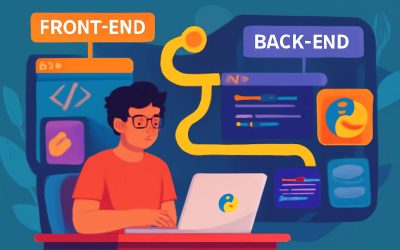A full stack framework provides a complete set of tools to create a web application from the front end user interface to the back end database. These frameworks are designed to reduce the amount of time required to code and can be used for small, medium, or large applications.
As more companies are looking to hire developers with a wide range of skills, the demand for full stack engineers is increasing. These developers are able to design, build, and test both the front-end interface and back-end functionality of web applications. They have a deep understanding of the entire web development process, including database structure and how information is stored and retrieved. They are also able to work with different programming languages and can handle the more complex aspects of software development.
When interviewing a candidate for a position as a full stack developer, it’s important to assess their technical skills and soft skills. To begin with, you should ask the candidate about their experience with different front end and back-end technologies. This will help you understand if they are capable of doing the job in an effective manner. You should also ask them about the frameworks they use for different tasks and if they have any experience in working with APIs.
The best full stack frameworks are those that have both the right front-end and back-end tools. These include HTML, CSS, JavaScript, and Node JS. They can help you develop an application that is easy to navigate and offers a great user experience. These tools are the foundation of the internet, so it’s important to learn them well.
AngularJS is a popular front-end framework for building Single Page Applications (SPAs). It allows you to develop interactive mobile apps with HTML, CSS, and JavaScript. It has a lot of features and is highly extensible. It is also open source and is used by many websites and mobile applications.
Another popular front-end framework is EmberJS, which provides a complete toolkit to develop SPAs and MVC applications. It has a robust library of features and is very fast to deploy. It is also used by many popular apps, such as Twitter and Netflix.
For the back-end, there are several popular frameworks. These include Ruby on Rails, Grails, Django, and Flask. These frameworks provide a variety of benefits, including fast performance, easier testing and maintenance, and an integrated development environment. Ruby on Rails is an excellent option for developing applications that require high scalability and complicated workflows. It also has a clean and readable syntax and can be used with almost any database.
If you are interested in learning more about full stack frameworks, check out our blog post on the topic. We also recommend reading our guide on how to become a full-stack developer. This article provides a thorough overview of the skills and tools that you need to get started in this exciting career path. With a little bit of practice, you can be on your way to becoming a full-stack developer in no time!



0 Comments